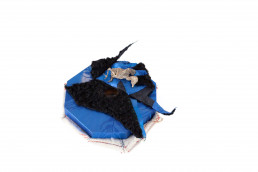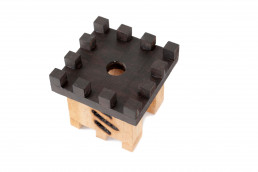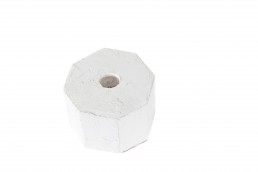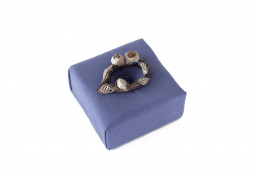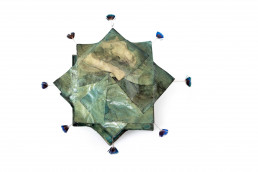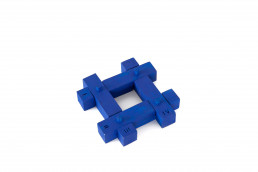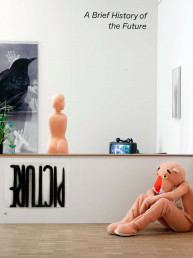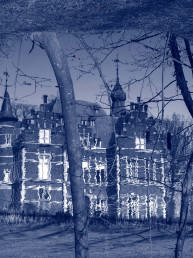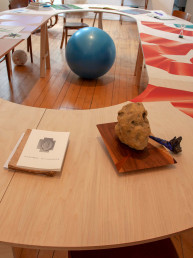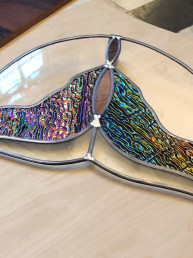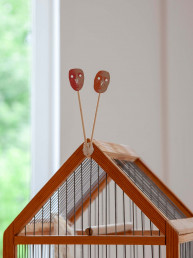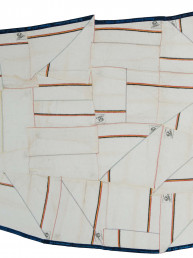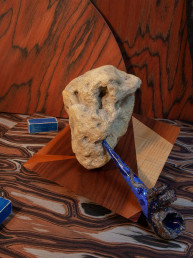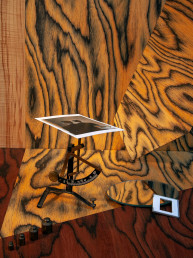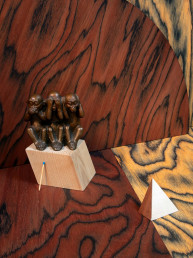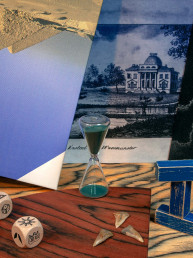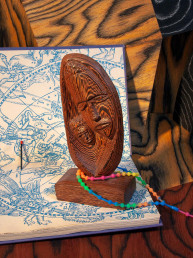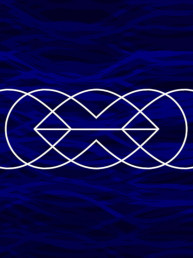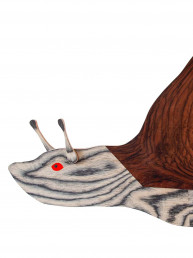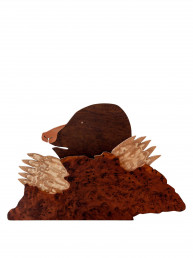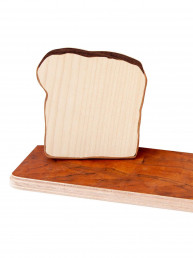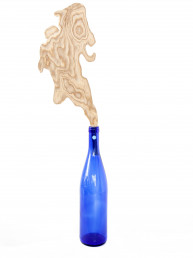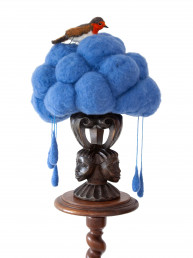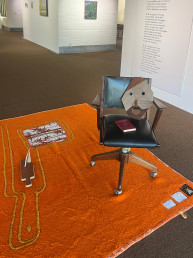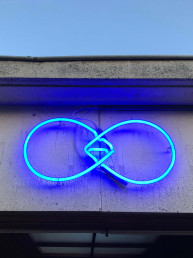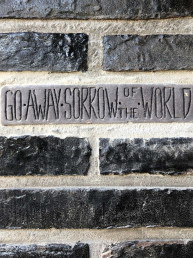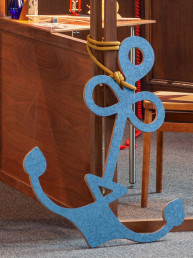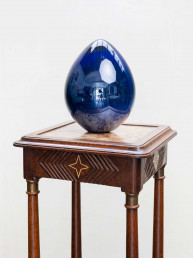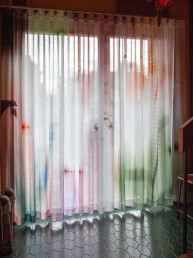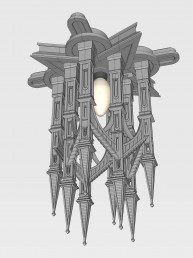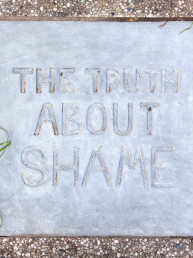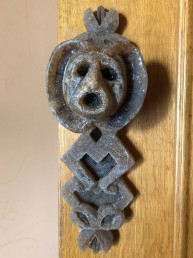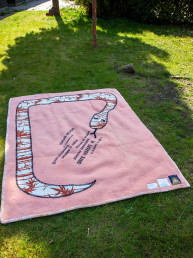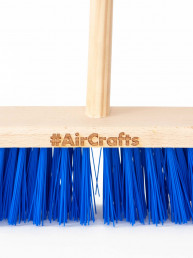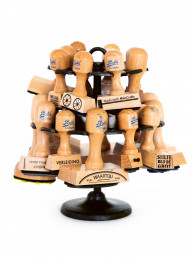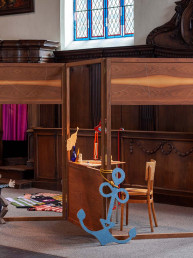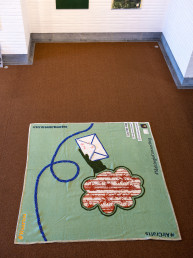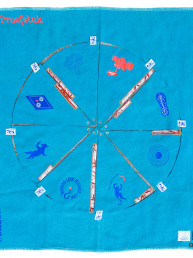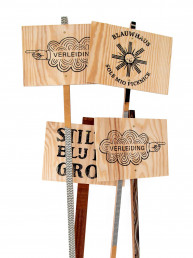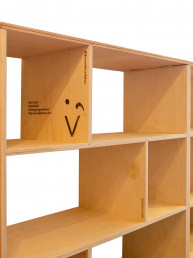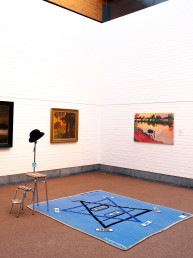(Blauwhaus) Ferula
ArtistWarre Mulder, Ilse Van Roy, Chantal van Rijt, Kelly Schacht, Alice McCabe, Evy Bosman, Hilde Borgermans, Wim WaumanTitleFerulaYear2019SizeH 195 cmMaterialsMixed
Excerpt from (Blauwhaus) GetijdenBoek/BookofTides, 2019 (p. 90-91):
Blauwhaus guest Warre Mulder, in consultation with a few other residents, suggested the idea of producing a pilgrim’s staff; various meaningful elements could be attached to this and could thus be connected to each other during the final event of the residency. The object, which eight artists worked on, was named ‘Ferula’ (bishop’s staff); Warre provided a sculpted fish’s tail (p. 95) as a base, referring to the mermaid, the Waesmonster, which had stirred things up by seducing the pilgrim. The tail has a raised metal piece at the bottom that leaves traces of a stylized boat in the sand: the ship of Odysseus, the mythological hero who was able, with his tricks, to resist the songs of the sirens.
The first addition, a contribution by Ilse Van Roy, can be interpreted as a final resting place, a bed or nest of textile scraps with, on
top, the bronze cast of a baby bird that we had found dead in front of the castle, perhaps it was Oriole (p. 93). As a third ‘charm’ on the staff, Chantal van Rijt provided a wooden castle shape with battlements and walls burnt by focusing sunlight through a glass ball: the Sole Mio as energy source and destroyer (p. 42).
Above that was a particularly light octagonal shape by Kelly Schacht: a multi-layered numerical reference to the eight-sided church in Roosenberg abbey, the Sint-Barbara chapel in the Neerstraat and the base of the mysterious pillory in Sombeke.
At the ‘house of the heart’, I was offered a ceramic ring on a blue pedestal by Alice McCabe, which, with some imagination, consciously or not, can seem quite evocative.
Evy Bosman made a beautiful eight-pointed star from multiple layers of post-its painted with colorfast blue ink from the courthouse of Dendermonde. She also incorporated small bright blue feathers of a peacock at the tips (p. 60).
Hilde Borgermans made a wooden ‘FenceCross’ with protruding dowels as a reference to the fencing of Ortegat-Vermeulen Castle and the timber-framed house that stood in the garden of her parents’ house (p. 57).
To close the ‘Ferula’ at the top, I provided the silverplated shoe that my parents had cast with my first ‘botinne’ more than forty years ago and on which my first name and date of birth can also be read. Warre provided the trinket with two holes and a blue string that tied the shoe as a lace with a loop that refers to the lemniscate, the infinity sign that was already inextricably interwoven in the Blauwhaus story.




